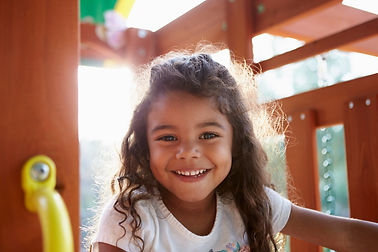
Playground Construction
Designing and constructing preschool playgrounds involves a blend of creativity, safety considerations, and educational principles to create a space where children can learn, play, and grow. Here's a comprehensive guide:

01
Safety Considerations:
-
Soft Surfaces: Use materials like rubber mulch, pour in place synthetic turf to cushion falls.
-
Proper Fencing: Ensure the area is enclosed with child-safe fencing to prevent children from wandering off.
-
Age-Appropriate Equipment: Install equipment suitable for preschool-aged children, with low platforms and multiple opportunities for children to learn social and emotional skills that are transferable to other learning environments.
Creating outdoor learning centers for preschoolers that align with teachers' supervision levels and offer challenging environments involves thoughtful design and collaboration. Here's how to approach it:
02
Collaborative Planning:
-
Involve Teachers: Work closely with preschool teachers to understand their educational goals and supervision capabilities.
-
Identify Learning Objectives: Determine what skills and concepts teachers want to reinforce through outdoor activities.


03
Design Principles:
-
Zone Planning: Divide the outdoor space into zones for different activities like gross motor skills, sensory play, imaginative play, and quiet areas.
-
Accessibility: Ensure that all areas and equipment are accessible to children with varying abilities.
-
Natural Elements: Incorporate natural elements like plans, rocks, and water features to encourage exploration and sensory experiences.
04
Age-Appropriate Challenges:
-
Graduated Difficulty: Provide activities and equipment that offer varying levels of difficulty, allowing children to challenge themselves at their own pace.
-
Problem Solving Opportunities: Include elements that encourage problem-solving, creativity, and critical thinking, such as puzzles, building blocks, or obstacle courses.
-
Risk-Benefit Analysis: Balance the need for safety with the benefits of risk-taking and challenge to foster resilience and confidence in children.


05
Supervision Strategies:
-
Teacher Stations: Designate specific areas where teachers can supervise multiple activities simultaneously.
-
Clear Sightlines: Ensure that teachers have clear sightlines to monitor children at all times, minimizing blind spots.
-
Buddy System: Encourage children to engage in activities in pairs or small groups, facilitating peer supervision under the guidance of teachers.
06
Maintenance and Adaptation:
-
Regular Inspections: Conduct routine inspections of equipment and facilities to ensure safety and functionality.
-
Flexible Design: Create spaces and activities that can be easily adapted or modified based on changing educational needs or seasonal variations.
-
Feedback Loop: Establish channels for teachers to provide feedback on the effectiveness of outdoor learning environments, allowing for continuous improvment.

By incorporating these elements into the design and construction of outdoor learning centers, we are able to create dynamic and engaging spaces that support children's development while working within the parameters of teacher supervision levels.
